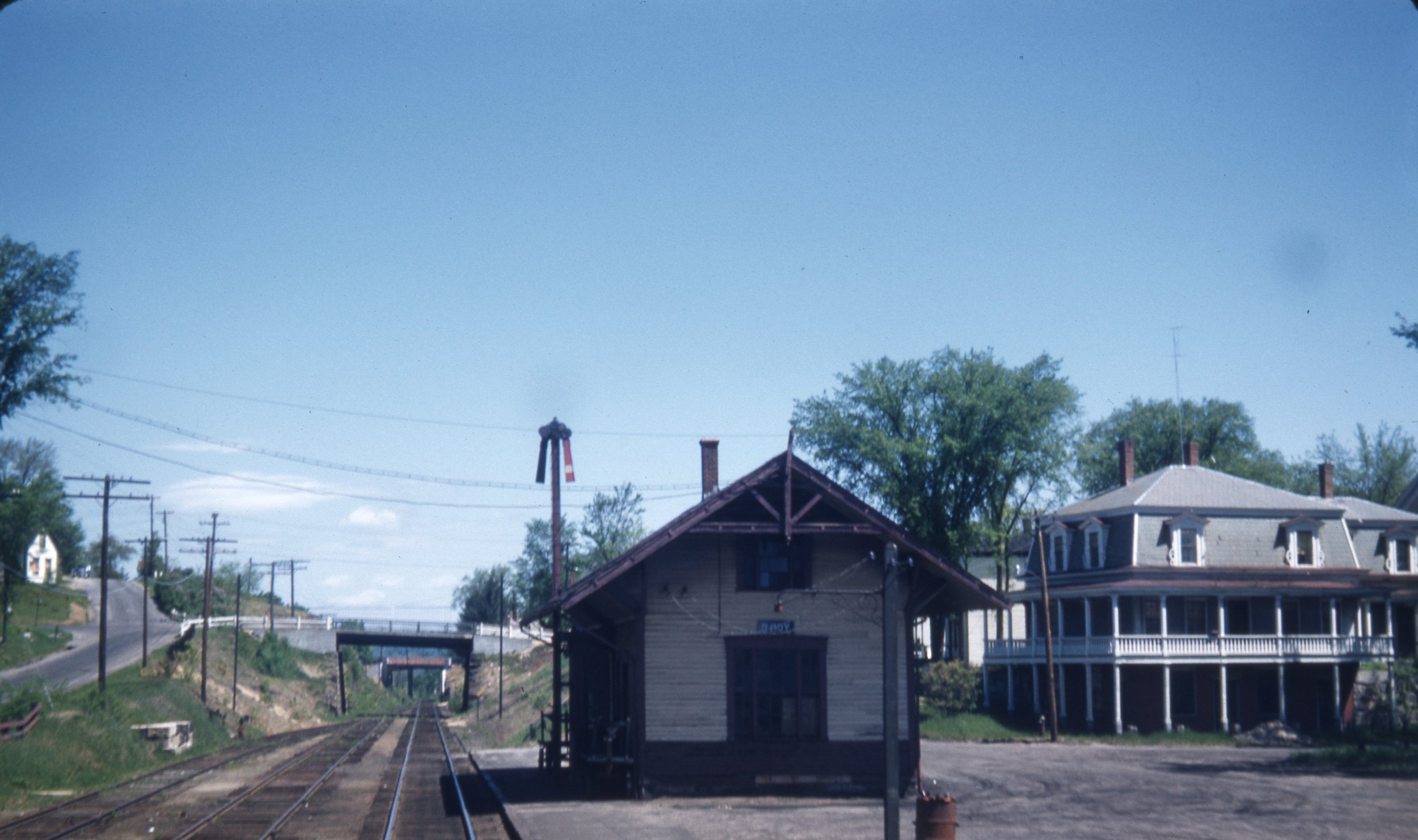
Why model the Boston & Maine Railroad?
The reason, in one word, is VARIETY.
Consider the varied terrain. From the rocky Atlantic coast across rolling hills and river valleys to the Berkshires and the majestic White Mountains, the B&M offers the modeler the opportunity to include the whole panoply of New England scenery in his layout. Country towns with nothing more than a lumberyard spur and a milk platform. Industrial cities with rows of brick mill buildings, canals, and intricate trackage winding through them all. Boston, the market town of New England, with its vast yards, warehouses, North Station, draw bridges, and towers. All places that make for beautiful layouts and interesting operating.
Consider the time line. The B&M spans American railroading from the 1830s to the present day. The entire range of locomotive development, from the earliest 2-2-0s to six-axle diesels can be represented. Especially popular is the steam-to-diesel transition period, when Moguls, Pacifics, Limas, and Mountains were giving way to EMD F, E, SW and GP units as well as Alco RS units - resplendent in maroon and gold - and stainless steel Buddliners. Those with a more modern interest can replicate the 1960s, 1970s and 1980s when grimy blue diesels still provided service to many New England locales. The post-B&M Guilford and Pan Am Railways era from 1983 to the present day offers a whole new spectrum of power and paint schemes.
Consider the traffic. Passenger afficionados can model anything from speedy commuter trains to first-class express trains to back country locals or mixed trains - all in the same geographic region and time period. The B&M had it all: wooden passenger coaches and combines, steel diners and Pullmans, sleeper cars, sleek Buddliners and, of course, the streamliner #6000 - better known as the Flying Yankee. Not into passenger trains? The B&M freight modeler will never be bored. Paper, coal, woodchips, lumber, refrigerated goods, merchandise, automobiles, cement, specialty goods, farm feed and supplies, milk, steel, oil, propane; the list goes on and on. A plethora of industrial options, from small feed stores and lumber yards to massive coal-fired power plants and paper mills could be found on the Boston & Maine system.
Then there are structures. The B&M inherited the line-side structures of over 150 railroads. Trestles, covered bridges, and the Hoosac Tunnel are all model-worthy subjects and will add multi-level realism to your layout. B&M territory featured stations in every architectural style and in every size. There were unique stations such as North Conway and Salem, big city stations like Fitchburg, Lawrence, and Concord, N.H., and suburban stations as varied as Belmont, Mass., Swampscott, and Cherry Brook. Don’t forget country stations like Potter Place and Newbury, N.H. and “wide spots in the tracks,” like Wilson’s that boasted of nothing more than a passenger shelter.
Related links:
Purchase digital PDF copies of our Modeler’s Notes in our Digital Media store.
Sample issue of “Modelers’ Notes” from the B&MRRHS Newsletter (“Modelers Notes” has been a feature section of the B&MRRHS Newsletter for many years. In this handy guide you will find a wealth of practical information about modeling the motive power, rolling stock, and structures of the Boston & Maine, as well as some very interesting historical background concerning how the B&M built and acquired its equipment.)
Modelers Notes Index, compiled by Jack Dziadul, is located on our Digital Media page
Inspiring prototype photographs from our photo archive site
Submitted modeling photos from our members and friends

